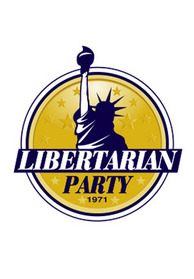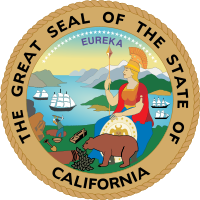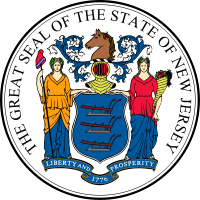Is the Revolution Over? 3rd Party US House Candidacies Fall 22% from 2010
There are 97 fewer third party and independent candidates on the general election ballots for the nation’s 435 congressional district races this cycle compared to two years ago

The 2010 cycle found the largest number of third party and independent candidates on the ballot in U.S. House races in any midterm election since 1934, with an average of more than one per contest and 443 in total.
A struggling economy and low congressional approval ratings spurred many alternative party candidates to put their hat in the ring and name on the ballot.
But even though economic uncertainty remains and the national debt and political disaffection with the major parties in D.C. have increased from two years ago, the number of non-major party candidates running for Congress in 2012 has decreased substantially.
So, is the revolution over?
A Smart Politics analysis finds there are 97 fewer third party and independent candidates on the general election ballot in U.S. House contests in 2012 (346) compared to 2010 (443), or a decrease of 21.9 percent from the previous cycle.
The decline in alternative party candidates has occurred across many states throughout the country.
There has been a decrease in the number of third party and independent candidates from 2010’s numbers in 29 states, with an increase in 17 states, and the same number in the remaining four.

This new electoral system has led to the disappearance of nearly all non-major party candidates at the general election phase, with just four independents making the ballot this year compared to 43 non-major party candidates in 2010.
Also experiencing a noticeable decline in alternative party candidates from the previous cycle are Tennessee (-15), Minnesota (-11), Michigan (-10), South Carolina (-9), Illinois (-8), Ohio (-8), Massachusetts (-7), and Virginia (-5).
The state with the largest uptick in third party candidates this year is Texas – from 36 in 2010 to 48 this cycle, with the bump mostly coming from a rise in Green Party candidates (rising from two in 2010 to 13 in 2012).
Other states experiencing an uptick in minor party candidates include New York (+5), New Jersey (+4), Arkansas (+4, doubling to eight), Oklahoma (+3, doubling to six), Colorado (+3), Kentucky (+3), Louisiana (+3), and Wyoming (+2, tripling to three).
Nine states will only have Democrats and Republicans on the ballot in their congressional races this cycle: Alabama, Georgia, Hawaii, Maine, Nebraska, New Mexico, South Dakota, Washington, and West Virginia.
In 2010, only five states failed to generate an alternative party or independent candidate: Alaska, Georgia, Maine, New Mexico, and North Dakota.
The 97-candidate decline in the number of minor party and independent candidates from 2010 to 2012 is the eighth largest cycle-to-cycle drop during the last 80 years behind 1938 (-236), 1994 (-184), 2002 (-178), 1978 (-165), 1998 (-129), 1942 (-125), and 1984 (-110).
Overall, however, the 346 third party and independent candidates on the ballot in 2012 still ranks far above the 80-year trend line, in which an average of just 247 such candidates have received ballot access across the last 41 cycles since 1932 (and 272 in presidential election years).
Third Party and Independent U.S. House Candidacies in Presidential vs. Midterm Election Cycles, 1932-2012
|
Cycle
|
# Candidates
|
Average
|
|
Presidential
|
5,713
|
272.0
|
|
Midterm
|
4,415
|
220.8
|
Note: Table compiled by Smart Politics.
The Libertarian Party, the third largest party in the nation, again leads the way with 133 candidates running in U.S. House contests this fall.
The party has a seen a modest drop of 14 percent for the number of its candidates on the general election ballot from two years ago when 155 received ballot access.
However, that drop off can largely be attributed to California, which had 21 Libertarian candidates on the fall ballot two years ago, but has largely seen the disappearance of all candidates from outside the two-party system on the general election ballot due to the state’s new non-partisan primary system.
The party that has suffered a much greater loss in candidate recruitment and ballot access is the Constitution Party.
In 2010, 39 candidates ran under that party’s moniker (including its predecessor, the U.S. Taxpayers’ Party in Michigan).
This year, just 19 such candidates are on the general election ballot.
The biggest voids are found in Ohio, South Carolina, and Utah where 11 Constitution Party candidates ran for Congress in 2010 and none this year.
On the left side of the third party spectrum, the number of Green Party affiliated candidates is approximately even this cycle (56) compared to two years ago (58).

New Jersey will have 29 alternative party candidates on the ballot across its 12 congressional districts this cycle – third most in the nation behind Michigan (30) and the much more heavily populated state of Texas (48). (New Jersey also has the third largest average number of such candidates per contest at 2.42 per district behind only the at-large states of Vermont and Wyoming at 3.00).
Only five other states have averaged at least one non-major party candidate per race during this 80-year stretch: Vermont (1.59 per contest), Michigan (1.33), Delaware (1.27), Nevada (1.16), and Utah (1.07).
Rounding out the Top 10 are New York at #7 (0.87 per contest), Hawaii at #8 (0.83), Connecticut at #9 (0.82), and Colorado at #10 (0.74).
The states at the bottom of this list are all from the south.
Georgia has been the least friendly to third party candidates with just 20 appearing on the ballot in 434 U.S. House races since 1932, or 0.05 per contest.
Arkansas ranks #49 (0.09 per contest) followed by Florida at #48 (0.10), West Virginia at #47 (0.11), and Louisiana at #46 (0.15).
Third Party and Independent U.S. House Candidacies by State, 1932-2012
|
Rank
|
State
|
Total
|
Races
|
Per race
|
|
1
|
New Jersey
|
958
|
572
|
1.67
|
|
2
|
Vermont
|
65
|
41
|
1.59
|
|
3
|
Michigan
|
940
|
709
|
1.33
|
|
4
|
Delaware
|
52
|
41
|
1.27
|
|
5
|
Nevada
|
74
|
64
|
1.16
|
|
6
|
Utah
|
106
|
99
|
1.07
|
|
7
|
New York
|
1353
|
1562
|
0.87
|
|
8
|
Hawaii
|
44
|
53
|
0.83
|
|
9
|
Connecticut
|
196
|
240
|
0.82
|
|
10
|
Colorado
|
154
|
207
|
0.74
|
|
11
|
Tennessee
|
267
|
369
|
0.72
|
|
11
|
California
|
1137
|
1573
|
0.72
|
|
13
|
Arizona
|
115
|
164
|
0.70
|
|
14
|
Alaska
|
19
|
28
|
0.68
|
|
15
|
Oregon
|
112
|
175
|
0.64
|
|
16
|
Wisconsin
|
236
|
383
|
0.62
|
|
17
|
North Dakota
|
36
|
61
|
0.59
|
|
17
|
Missouri
|
251
|
428
|
0.59
|
|
19
|
New Hampshire
|
47
|
82
|
0.57
|
|
19
|
Minnesota
|
196
|
343
|
0.57
|
|
21
|
Iowa
|
154
|
274
|
0.56
|
|
22
|
Wyoming
|
22
|
41
|
0.54
|
|
23
|
Rhode Island
|
42
|
82
|
0.51
|
|
24
|
Indiana
|
217
|
434
|
0.50
|
|
24
|
Virginia
|
206
|
411
|
0.50
|
|
26
|
Montana
|
35
|
71
|
0.49
|
|
26
|
Pennsylvania
|
523
|
1078
|
0.49
|
|
28
|
Mississippi
|
96
|
224
|
0.43
|
|
28
|
Washington
|
130
|
305
|
0.43
|
|
30
|
South Carolina
|
103
|
247
|
0.42
|
|
31
|
Texas
|
422
|
1036
|
0.41
|
|
32
|
Alabama
|
129
|
322
|
0.40
|
|
32
|
Oklahoma
|
105
|
265
|
0.40
|
|
34
|
Kansas
|
84
|
214
|
0.39
|
|
35
|
Nebraska
|
55
|
143
|
0.38
|
|
36
|
Idaho
|
30
|
82
|
0.37
|
|
37
|
Kentucky
|
103
|
301
|
0.34
|
|
38
|
Massachusetts
|
162
|
499
|
0.32
|
|
39
|
New Mexico
|
28
|
93
|
0.30
|
|
40
|
Ohio
|
235
|
891
|
0.26
|
|
40
|
South Dakota
|
17
|
66
|
0.26
|
|
42
|
Maine
|
24
|
97
|
0.25
|
|
43
|
North Carolina
|
114
|
478
|
0.24
|
|
44
|
Maryland
|
70
|
303
|
0.23
|
|
45
|
Illinois
|
151
|
953
|
0.16
|
|
46
|
Louisiana
|
46
|
316
|
0.15
|
|
47
|
West Virginia
|
21
|
188
|
0.11
|
|
48
|
Florida
|
61
|
592
|
0.10
|
|
49
|
Arkansas
|
19
|
204
|
0.09
|
|
50
|
Georgia
|
20
|
434
|
0.05
|
|
|
Total
|
9,782
|
17,838
|
0.55
|
Note: Table compiled by Smart Politics. Historical data culled from the Office of the Clerk of U.S. House of Representatives. 2012 data culled from each state’s respective governing elections office or administrative body.
Follow Smart Politics on Twitter.
